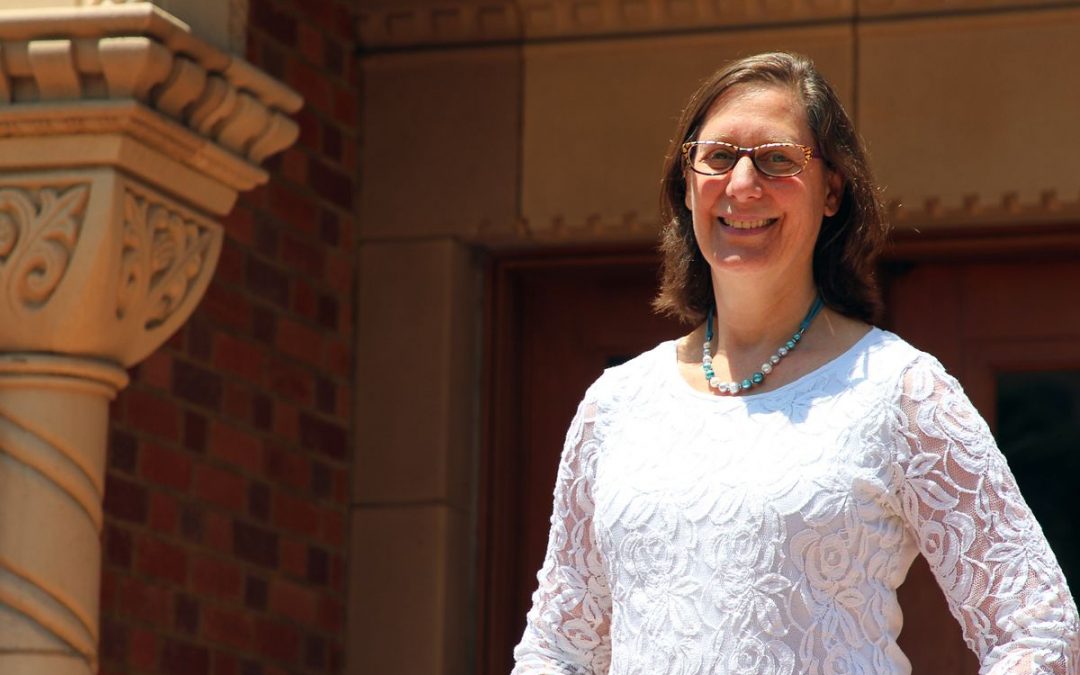The Center for the Advancement of Teaching provides services and resources for faculty of all teaching styles and needs
Whether they’ve already risen up the ranks in their department or are still early in their careers, just about every professor is familiar with the feeling of walking into a lecture hall for the first time and standing in front of students who expect to learn something from you. While these professors may be experts in nanotechnology, award-winning architects or leading historians of ancient Chinese civilizations, it’s understandable that being able to convey that knowledge to a room full of people isn’t always second nature.
Knowing that, UCLA is committed to do what it can to help its professors from the time they step in front of their first class and onward throughout their careers. These efforts began in earnest in 1975 with the creation of the UCLA Office of Instructional Development, dedicated to providing a place for faculty to get assistance in understanding not only how to teach, but how to teach well.
This quarter the office announced a name change that would better represent its mission. The new name is the UCLA Center for the Advancement of Teaching, which continues to provide services and resources for faculty to build upon their instructional skills. Patricia Turner, dean and vice provost of undergraduate education at UCLA, said in an announcement that the change makes the center’s name better aligned with its purpose and signals a renewed commitment to supporting teaching at UCLA.
While there are as many teaching styles as there are teachers, the center operates with the idea that every professor and lecturer should aspire to a high quality of instruction. Adrienne Lavine, faculty director of the center since 2017, emphasized two key characteristics of good teaching.
“Instructors should think about what they are trying to accomplish, what they want their students to be able to do as a product of this course and how they will design activities and assignments to achieve those goals,” said Lavine, who will become associate vice provost on July 1. “They should also think about how they will foster student learning by actively engaging students in the learning process.”
This is where the center comes into play, Lavine said. At the center, faculty can receive support and advice about how to develop or redesign their courses, and they can also apply for grants to cover things like graduate student assistance, video production services and assessment resources.
Lavine, who is also a professor of mechanical and aerospace engineering in the UCLA Samueli School of Engineering, said that the center takes into consideration which method of teaching is comfortable for each professor and that what works for one may not work for another. Individual goals or problems are taken into account during one-on-one counseling sessions, with center staff suggesting different strategies for faculty to try.
For example, Lavine said that if an instructor wanted to get students in a large lecture hall more involved in conversation, the center staff might suggest using polling software so that all students can respond and the instructor can get quick feedback about whether concepts are being understood. There are also other approaches to eliciting student participation that don’t use technology at all, which could be more appropriate depending on the faculty member’s goals and comfort level with technology, she said.
Professors aren’t just getting counseling from center staff; they’re getting it from their colleagues, too. The center’s “Faculty Teaching Faculty about Teaching” workshops, which are tailored for each discipline, stemmed from the idea that professors can learn best from fellow faculty. Workshop leaders are chosen on the basis of their interests and success in teaching, Lavine said.
Veronica Santos, associate professor of bioengineering and mechanical and aerospace engineering, and Robert Candler, associate professor of electrical and computer engineering, led a workshop on active learning strategies, because they had found effective ways of engaging students in problem-solving in the classroom, with and without the use of technology.
Genevieve Carpio, assistant professor of Chicana and Chicano studies, was selected to lead a workshop because of her success in making a course with more than 400 students feel intimate through group activity, like making zines.
Scott Brandenberg, associate dean for diversity and inclusion in the department of civil and environmental engineering, spoke about the demographics of engineering students and how to create inclusive learning environments for students of all backgrounds during his workshop.
Teaching assistants can also benefit from resources like these. The teaching assistant training program offered by the center provides voluntary workshops that cover what Lavine calls the “foundations series,” which are useful for all teaching assistants regardless of discipline. The series includes topics on how students learn, creating inclusive classrooms, nuts and bolts of lesson planning, active learning strategies and assessment and grading. This past year, more than 700 teaching assistants participated in the training program.
The center also provides faculty with technology and media resources. One of them is BruinCast, which records and podcasts regularly scheduled undergraduate lectures. This gives students another opportunity to “attend” a lecture. Currently, UCLA has 11 lecture halls equipped for video streaming, podcasting and recording.
Lavine and her colleagues at the center are committed to improve learning, whether that’s by maintaining classroom equipment, providing workshops or envisioning a campus where each instructor understands the fundamentals of an effective and inclusive learning environment.
“This is a time on our campus when teaching is getting more attention than it ever has before and there is a demand from faculty for more support and more resources for their teaching,” Lavine said. “It’s a time when this unit can have a big impact on the future of UCLA and our students.”
Article by Sidney Kantono

